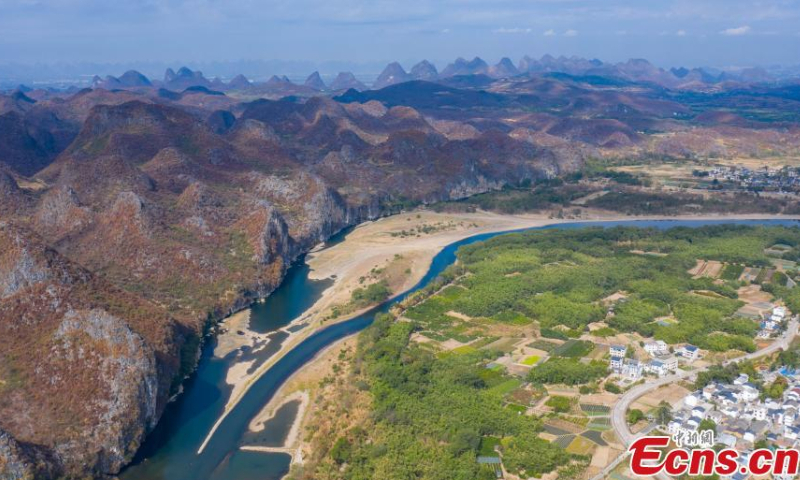NW China ups emergency response for drought

Days after northern China emerged from flood, four provincial regions in the northwestern part of the country are facing a new challenge that has led them to activate level-IV emergency responses for drought. Experts warned of more severe droughts this year with the return of El Nino, but called for calm as these regions are frequently hit by drought and have accumulated rich experience.
Since June, drought has hit central and western Inner Mongolia, Gansu, Qinghai and Ningxia, with the amount of flowing water and the amount of water stored in reservoirs in this region lower than the same period in normal years, according to the Ministry of Water Resources on Wednesday.
The severe drought in the four provincial regions is also expected to continue to persist for a longer period, according to the ministry. China has a four-tier emergency response system for disaster relief, with Level IV being the lowest and Level I the highest.
In the Jinchuan district of Jinchang city in Gansu, corn cobs cannot even be seen across stretches of corn fields where corn stalks are evidently short and leaves are withered. In response, local departments have started a second round of irrigation to ensure arable land get sufficient water supply, China Central Television reported.
Jinchang city also mobilized drones for free to spray pesticides in farmers' corn and potato fields to prevent pests and disease and lower the losses of farmers.
The Lanzhou Central Meteorological Observatory activated a yellow warning for drought at noon on Tuesday. It said the latest monitoring data shows the drought in the cities of Jinchang, Wuwei and Baiyin has become even more severe.
A drought relief expert who preferred not to be named told the Global Times on Wednesday that the four northwestern provincial regions are frequently hit by drought, so local departments are experienced in drought relief. In the end, the biggest impact in the region will be on animal husbandry.
The Gansu provincial emergency department called for efforts to guarantee the water supply for people's livelihoods and livestock.
One day earlier on Tuesday the ministry said it had sent working groups and expert teams to the four provincial regions.
The ministry has also urged local water management authorities to closely monitor the development of rain, water and drought, to scientifically divert water from conservancy projects and to adopt localized measures.
But according to the National Meteorological Center on Wednesday, in the next three days, there will be moderate to heavy rain in Qinghai, Gansu, western Sichuan, and also precipitation in Inner Mongolia.
The drought relief expert said the rainfall should mitigate the regional drought but it still needs to be decided in how much degree it would ease the drought.
Climate change experts have warned that the development of El Nino, a result of natural shifts in winds and ocean temperatures, is expected to contribute to global warming and increase the likelihood of temperature records being broken. It also brings heavier floods to some parts of the planet while drying others out.
In the period from late June to July 2009, 17 provinces in China suffered from severe drought due to a moderate El Ni?o event. Eastern Inner Mongolia, western Jilin Province, and western Liaoning Province also experienced extreme drought, experts said.